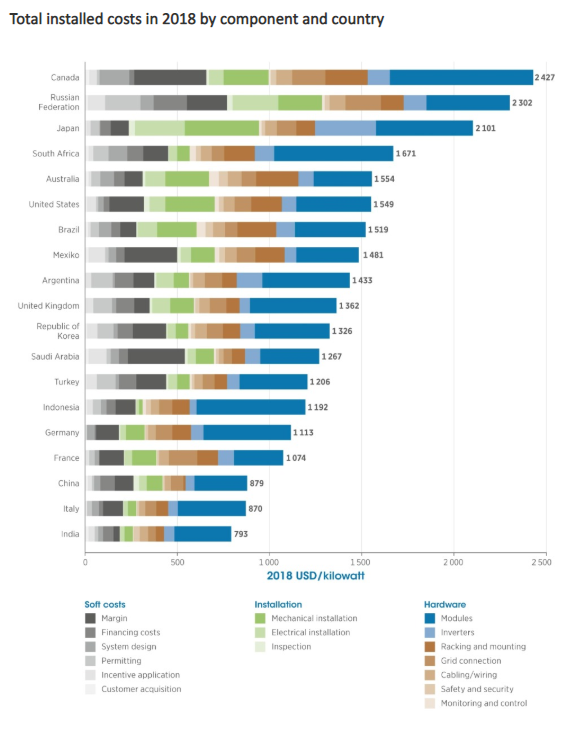
India is now producing the world’s cheapest solar power
Costs of building large-scale solar installations in India fell by 27 per cent in 2018.
A short time ago, solar power was considered a marginal power source. But it is now one of the major drivers behind the transition to greener, more sustainable energy.
Around the globe, prices are falling and India is now producing the world’s cheapest solar power, according to an International Renewable Energy Agency (IRENA) survey.
The costs of building large-scale solar installations in India fell by 27% in 2018, year-on-year, thanks to a combination of low-priced panel imports from China, abundant land and cheap labour.

Average solar prices from large-scale installations in India were less than a third of Canada’s, where costs were highest of the countries surveyed.
More than half of the total costs of building a solar installation in India relate to hardware, like racking and mounting, while the remainder involves soft costs such as system design and financing.
Lower service and labour outlay have contributed to a dramatic fall in the investment needed to set up large-scale solar power-generating projects. Between 2010 and 2018, setup costs in India fell by 80%, the most precipitous decline of any country.
Back to nature
As prices come down, demand goes up. The expanding global solar sector now accounts for 55% of all new renewable power-generating capacity. Last year, 94 gigawatts of new capacity came online, largely added by Asian countries.
China was responsible for 44 gigawatts of all new solar capacity, almost five-times more than India, which followed directly behind. Other rapidly expanding markets include the US, Japan, Australia and Germany.
Alongside the rise of solar, other clean energy sources like wind farms and hydropower are also growing. Renewable energy now generates a third of global power capacity.
“Through its compelling business case, renewable energy has established itself as the technology of choice for new power generation capacity,” said Adnan Z. Amin, director general of IRENA.
“The strong growth in 2018 continues the remarkable trend of the last five years, which reflects an ongoing shift towards renewable power as the driver of global energy transformation.”
A powerful incentive
As markets shift to cleaner energy sources, non-renewables – such as fossil fuels and nuclear power – have seen a steady decline throughout Europe, North America and Oceania.
But countries in Asia and the Middle East are still heavily reliant on fossil fuels, where oil- and gas-generating capacity is on the rise.
The IRENA report sees falling renewable technology costs as key to future energy decarbonisation, noting it will ultimately be cheaper to build and operate solar and wind farms than to run existing coal-fired power plants.
Onshore wind and solar power are quickly becoming less expensive than coal and oil, which could provide a powerful incentive for fossil fuel-dependent countries to switch to more sustainable energy sources.













